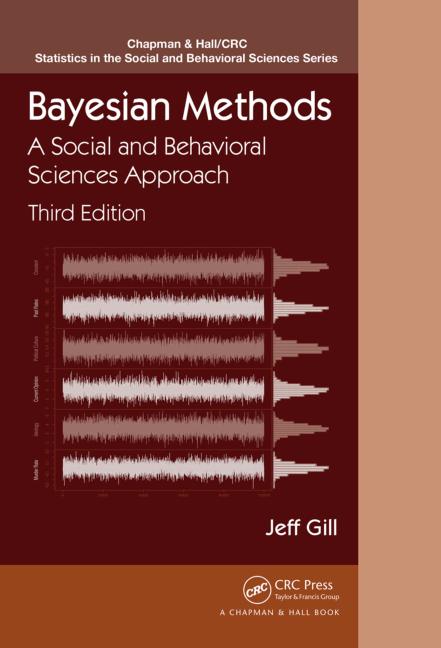Which is the best introductory textbook for Bayesian statistics?
One book per answer, please.
Which is the best introductory textbook for Bayesian statistics?
One book per answer, please.
Gill, J. (2014). Bayesian Methods: A Social and Behavioral Sciences Approach. 3rd edition.
Written by a political science professor, with social scientists as the target audience in mind. R code is provided.
http://www.amazon.com/Bayesian-Methods-Behavioral-Sciences-Statistics/dp/1439862486/

Since the type of beginner is not specified in the question, here is my advice for beginning statisticians:
Andrew B. Lawson and Emmanuel Lesaffre (2012): Bayesian Biostatistics
This book was used in the first year of our statistical science master and I found it relatively easy to understand for such a difficult subject. As with the majority of 'biostatistics' books, the examples are mainly clinical biology, but the methods are not restricted to those useful in clinical science. We had had about half a year of statistical education prior to this and besides Bayes theorem, Bayesian statistics hadn't been introduced yet.
What's also nice is that the entire 649 slides of accompanying presentations are available online.
This book hasn't been mentioned yet, as it's relatively new (2018):
A Student's Guide to Bayesian Statistics by Ben Lambert
In his videos, Lambert explains concepts in a very intuitive manner. This book does the same, explaining why the math works, using plenty of examples, and including problems to work at the end of each chapter. He incorporates videos into the book, noting in the margin when a particular video complements the given concept being explained.
It's somewhat in the same vein as Statistical Rethinking, but I found both the book and his videos to be more to the point, while still explaining the concepts well.
I'd suggest watching a few videos to get a feel for his style.
Bayesian Modeling Using WinBUGS by Ioannis Ntzoufras, 2009.
Not only does this book introduce Bayesian methods, but includes everything one needs to immediately start running and diagnosing Bayesian models from simple normal models to generalized linear models to Bayesian hierarchical models. Not impressed yet? An entire chapter on how to set up and run WinBUGS (also useful for OpenBUGS!). Pseudo code and R code side-by-side throughout the book. Everything is illustrated with hands on examples. Also included are a chapter on the predictive distribution and model checking, and a chapter on checking convergence.
It is such an excellent combination of theory, explanation, application, software instruction and code.
A really introductory book is Will Kurt's Bayesian Statistics the Fun Way. This approaches the logic of Bayesian statistics at a very high level - going through the basics of probability, and how prior information can combine with data to affect posterior probabilities. As an ecologist who didn't have a robust statistical training in gradschool, I still get bogged down by equations. I found Gelman's book way too difficult for my beginner level, but Will's book is finally helping me wrap my mind around the basic concepts. It has fun, practical examples that would have been a nice per-requisite to read before my grad program.
I plan to work my way through John Kruschke's "Doing Bayesian Data Analysis" as a next stepping stone.
Bishop (2006). Pattern Recognition and Machine Learning (PRML)
If you have ever heard about The Elements of Statistical Learning (ESL), PRML can be treated as a bayesian version of it. The book talks about the most important models in statistical/machine learning from linear regression, NN, SVM to graphical models, all in bayesian perspective. The introduction to EM algorithm, variational inference and MCMC are well written.
Savage's The Foundations of Statistics helped me understand the why and deeper concepts of Bayesian methods. It's not a how to book, but explains the underlying philosophy of stats.
I am stunned at how many introductory books there are. My recommendation is William Bolstad and James Curran's Introduction to Bayesian Statistics. It has several nice elements to it.
First, it covers a large percentage of the conjugate problems and covers all the standard problems in a sophomore-level test for an introduction to statistics course. It also covers the case when the prior is not conjugate.
Second, it covers the appropriate Frequentist procedure at each point, explaining both.
Third, it derives the solutions and so allows an understanding of the issues at a deeper level. It, optionally, allows for rigor.
It covers everything a sophomore-level book would cover, except with underlying math included. It is an upper-division, lower master's level book due to the included math.